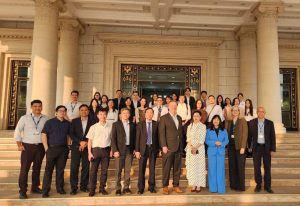Privacy-Preserving Visual Recognition Framework for Surveillance
Abstract
The widespread deployment of video surveillance systems has raised privacy awareness to the public. The main reason is that the facial attributes provide details about the identity of a subject and reveal other person-related information such as gender, race, and age. When humans are the dominant objects of interest in computer vision (CV) applications, there is a need to protect the relationship between collection, dissemination, and visual data storage. In CV solutions, a common practice to protect individuals’ visual privacy is to anonymize people’s faces in visual datasets composed of images or videos. Although the machine cannot recognize an individual’s faces, humans can identify the subject in the rest of the image or video. The majority of visual privacy protection schemes currently used in practice rely on ad-hoc methods such as mosaicking, blurring, and pixelation. These ad-hoc methods can easily provoke content damaging but cannot guarantee the face deidentification performance. The contradiction of using ad-hoc methods is between high privacy protection and low video utility. This project brings together the research area of CV and data privacy for effective interdisciplinary collaboration.
Author: Kok-Seng Wong
Read more about the author’s publications here



